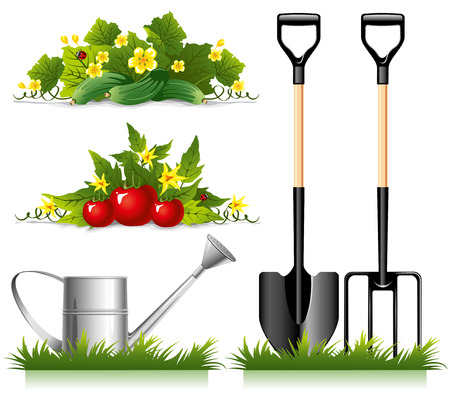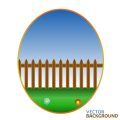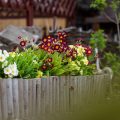1. Cleaning and Inspecting Your Tools
Keeping your garden tools clean and in good condition is the first step to making sure they last for many seasons. Before storing them away or using them for a new season, take the time to clean off any dirt, sap, or rust that may have built up. Not only will this help prevent damage, but it also ensures your tools work more efficiently.
How to Clean Your Garden Tools
| Tool Type | Cleaning Method |
|---|---|
| Shovels & Spades | Scrub with a wire brush to remove dirt; rinse with water and dry thoroughly. |
| Pruners & Shears | Wipe blades with rubbing alcohol to remove sap and disinfect. |
| Hand Tools (trowels, weeders) | Soak in soapy water, scrub with a stiff brush, then rinse and dry. |
| Metal Surfaces | Use steel wool or sandpaper to remove any rust; apply light oil afterward. |
Inspect for Wear and Damage
After cleaning your tools, it’s important to inspect them for signs of wear and tear. Look at the blades, joints, and moving parts. Make sure everything opens and closes smoothly without sticking. Dull blades should be sharpened or replaced if necessary.
What to Check:
- Blades: Look for chips, dull edges, or signs of rust.
- Screws & Bolts: Tighten any loose hardware on tools like pruners or loppers.
- Moving Parts: Test hinges and springs; add lubricant if needed.
Handle Care
Wooden handles can crack or splinter over time, especially after exposure to moisture. Run your hand along the handle to feel for rough spots or cracks. Sand down splinters with fine-grit sandpaper and rub in linseed oil to preserve the wood. For plastic or fiberglass handles, check for any bending or stress marks that could mean its time for a replacement.
2. Sharpening Blades and Cutting Edges
Sharp tools make gardening easier, safer, and better for your plants. Dull blades tear rather than cut, which can damage plant tissue and leave them vulnerable to disease. Taking time at the beginning of each season to sharpen your tools ensures clean cuts and promotes healthy growth.
Why It Matters
When pruners, shears, loppers, or lawn mower blades are dull, they crush stems and branches instead of slicing through them cleanly. This not only makes your job harder but also increases stress on plants. Clean cuts heal faster and reduce the risk of infection or pests.
Tools That Need Sharpening
| Tool | How Often to Sharpen | Tips |
|---|---|---|
| Pruners (Hand Pruners) | Every 1–2 months during active use | Use a sharpening stone or diamond file; follow original bevel angle |
| Loppers | Seasonally or after heavy use | Tighten loose bolts before sharpening; oil after sharpening |
| Hedge Shears | Each season or as needed | Disassemble if possible for thorough sharpening |
| Lawn Mower Blades | At least once per mowing season | Remove blade from mower before sharpening; balance after sharpening |
Simple Sharpening Steps
- Clean the tool thoroughly with warm soapy water and dry completely.
- If there is rust, remove it with steel wool or a wire brush.
- Use a sharpening stone, file, or specialized sharpener to follow the original edge angle.
- Make even strokes in one direction for consistent sharpness.
- After sharpening, apply a light coat of oil to prevent rust and keep moving parts smooth.
Safety Tip:
Always wear gloves and eye protection when sharpening blades. Secure the tool in a vise or clamp if necessary to prevent slipping.

3. Oiling and Lubricating Moving Parts
Keeping your garden tools in top shape means making sure all the moving parts stay smooth and rust-free. Over time, hinges, joints, and metal surfaces can stiffen or corrode, especially if tools are exposed to moisture or stored improperly. Regularly applying the right type of lubricant not only extends the life of your tools but also makes yard work easier and safer.
Why Lubrication Matters
When you skip oiling your tools, rust can build up and moving parts like pruners or shears may become hard to operate. This can lead to poor performance—or worse, injury. A quick application of oil helps everything glide smoothly and prevents wear and tear.
What to Lubricate
Focus on any part of a tool that moves or is made of bare metal. Heres a simple guide:
| Tool Type | Parts to Lubricate |
|---|---|
| Pruners & Loppers | Blades, pivot points, springs |
| Hedge Shears | Blades, hinge joints |
| Shovels & Spades | Metal blade surface (to prevent rust) |
| Lawn Mower | Wheel axles, blade shaft (refer to manual) |
Best Types of Lubricants
You don’t need anything fancy—just the right product for the job. Here are some good options:
- WD-40: Great for loosening stuck parts and protecting against rust.
- 3-in-1 Oil: A classic choice for small tools with moving parts.
- Silicone Spray: Ideal for waterproofing and long-lasting lubrication.
How to Apply
- Clean off any dirt or old grease with a rag.
- Add a few drops or light spray of lubricant directly on the moving parts.
- Work the tool back and forth to distribute the oil evenly.
- Wipe off any excess to avoid attracting dust or grime.
Pro Tip:
If you’re storing tools for the season, give them one last oiling before putting them away. It’s a simple step that keeps them ready for action next year.
4. Storing Tools Properly by Season
Proper storage is key to keeping your garden tools in great shape year after year. Whether youre wrapping up spring planting or putting everything away for winter, storing tools the right way can prevent rust, handle cracks, and other damage.
Dry Tools Before Storing
Before you put any tool away, make sure it’s completely dry. Moisture is one of the main culprits behind rust and mold. After cleaning your tools, use a rag or towel to dry them thoroughly. Let them air-dry for a bit if needed before storing.
Pick the Right Storage Spot
Choose a dry, covered location like a shed, garage, or basement. Avoid leaving tools outside or in damp places where they can get damaged by weather or humidity.
Recommended Storage Locations
| Tool Type | Best Storage Location |
|---|---|
| Hand Tools (trowels, pruners) | Shed drawer or wall-mounted rack |
| Larger Tools (rakes, shovels) | Garage wall hooks or corner stand |
| Power Tools (trimmers, blowers) | Shelf in dry garage with unplugged batteries |
Add Extra Protection During Off-Season
If youre storing tools for an entire season—like over the winter—consider adding extra protection:
- Oil metal parts: Lightly coat blades and metal surfaces with mineral oil to prevent rust.
- Treat wooden handles: Rub handles with linseed oil to keep the wood from drying out and cracking.
- Use silica gel packs: Place them in toolboxes or drawers to absorb moisture.
Create a Seasonal Storage Routine
A consistent routine helps extend the life of your tools. Use this simple seasonal checklist:
| Season | Main Storage Task |
|---|---|
| Spring | Inspect and clean tools before use |
| Summer | Wipe down after each use; store in shade |
| Fall | Deep clean and begin prep for winter storage |
| Winter | Dried, oiled, and stored in dry place until spring |
5. Replacing or Upgrading Worn-Out Tools
As part of your seasonal maintenance routine, it’s important to take a good look at how your garden tools are performing. Tools that are broken, rusted beyond repair, or just not doing the job anymore can slow you down and even lead to strain or injury. This is the perfect time to evaluate what’s working—and what isn’t.
How to Evaluate Your Garden Tools
Start by checking each tool for visible damage like cracks in handles, bent metal parts, or excessive rust. Then ask yourself if the tool still serves your needs. For example, is that old shovel too heavy? Does your pruner struggle to make clean cuts?
Things to Look For:
- Cracked or splintered handles
- Dull blades that won’t hold a sharp edge
- Loose screws or bolts
- Poor grip causing hand fatigue
When to Replace vs. Repair
If a tool only needs minor fixes like tightening bolts or sharpening blades, it may be worth repairing. But if its causing discomfort or slowing you down, replacing it with an ergonomic, updated version can make a big difference.
| Tool Condition | Recommended Action |
|---|---|
| Slight rust or dull blade | Clean and sharpen |
| Bent metal or broken parts | Replace |
| Poor grip or uncomfortable handle | Upgrade to ergonomic design |
| No longer suitable for current gardening needs | Select a more efficient alternative |
Selecting Better Tools
If you decide its time for new tools, look for features designed with comfort and efficiency in mind. Many newer models offer padded grips, lightweight materials, and adjustable handles that can ease strain on your hands and back—especially helpful if you spend long hours in the garden.
A Few Ergonomic Options to Consider:
- Cushioned grip pruners: Reduce hand fatigue during repetitive cutting tasks.
- Telescoping rakes and hoes: Allow better posture and reduce bending.
- Lighter weight shovels: Easier to handle without sacrificing strength.
The right tools make gardening more enjoyable and less of a chore. Seasonal check-ins are the ideal time to make sure everything in your shed is helping you work smarter—not harder.


